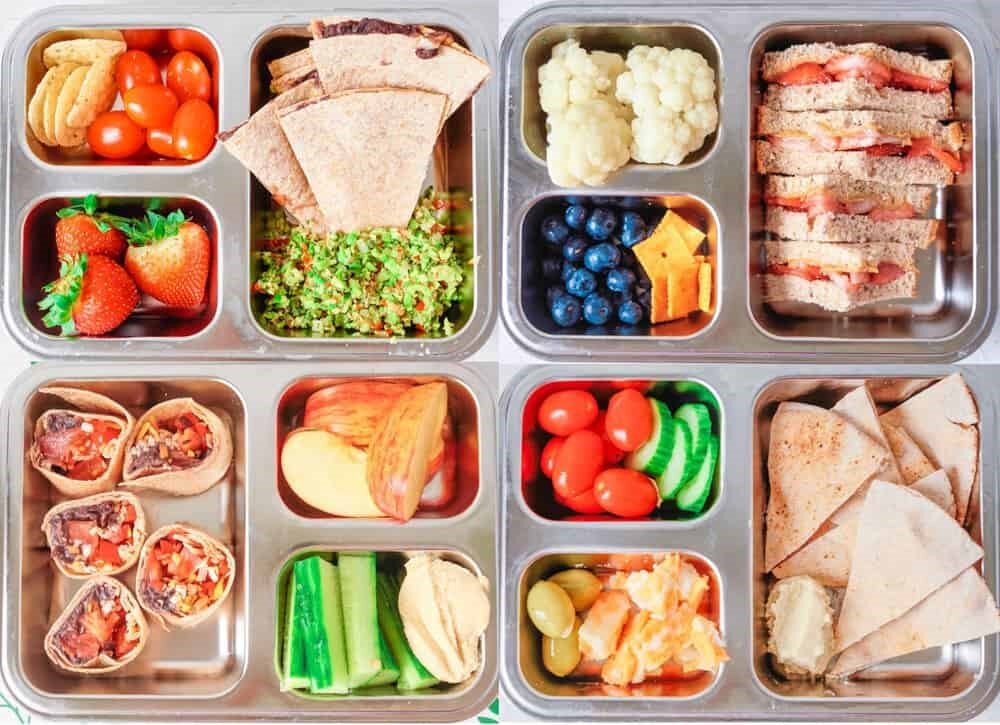Hints on Packing Lunch
The beginning of a new school year is nearly upon us. For many families, this means packing a daily lunch for your child to take to school. Whether this is your child’s first year doing so, or you’re just looking for some fresh ideas to keep things simple, healthy, and fun, read on.
What lunch is (and isn’t)
Lunch is an opportunity for your child to refuel and nourish themselves in the middle of the school day. They’re working hard, growing lots, and eating good food will keep them feeling good through the afternoon.
We have all stumbled upon those photos of cute bento boxes with flower-shaped cucumber slices. They really are adorable. But are they necessary? Let this serve as your reminder that lunches for your child can be lovely and ornate, or they can be lovely and simple. Both will be appreciated. Both will be gobbled up. Both will serve their purpose.
Nutrition simplified
Raise your hand if you’ve ever experienced the following: Your child eats nothing but peanut butter and strawberry jelly sandwiches for three months straight. You decide to be prepared and buy several jars of the coveted jelly. The next day, they declare they don’t eat peanut butter and jelly (perhaps even insisting they never did like it), and they decide they are ready to explore new foods. It is normal for children to have drastic changes to their palate.
Even the most adventurous eaters get into ruts sometimes, then change their habits seemingly on a whim. It’s normal and will probably happen a number of times as your child’s tastes develop.
The PB &J scenario does serve as a helpful reminder: Kids can have their nutritional needs met rather simply. Of course, we are not dieticians, and your best resource for information is your child’s pediatrician, but there’s room for a balanced diet even when it comes to more “selective” eaters.
When putting together a lunch, consider the following: Does the lunch include some protein, fruits/veggies, carbohydrates, and healthy fats? If so, it’s a well-balanced meal. And there are countless ways of providing what kids need. White Bear Montessori is a peanut and tree nut free facility, so keep this in mind as you plan lunches.
Here’s a great list in case you’re looking for one: The Essential School Lunch Grocery List
Keeping it green
We encourage families to utilize reusable containers whenever possible. We know there are times in all of our lives when convenience wins out over being “green”, but reducing single-use containers is one important way we can all care for the planet. Look for items that your child can easily open by themselves and that don’t have extra pieces and parts that can easily be lost.
A few ideas (links are for examples; many of these types of products can be found in stores nearby):
● Stainless bento-style box (Only one lid to keep track of)
● Yumbox
● Snapware
Utilizing little helpers
When possible, involve your child in the process of planning and making lunches. This involves a little teaching and learning in the beginning, but in the long run your child will become more independent and you will have a little more time to focus on other things.
Start with modeling. Have your child join you in the kitchen as you prepare their lunch and show them what to do. Slowly and deliberately go through each step in packing a lunch so they can have a good example of what it looks like.
Next, make lunch together. Have them join you in the kitchen again, but while you make a sandwich, they can be chopping up some fresh vegetables. Team effort!
Ask your child what they would like to pack. Having them participate in the planning and shopping makes the task a fun activity and gives them more ownership over creating a healthy meal. Teach them what a balanced lunch needs and go over examples of what that might look like.
Lastly, let your child do the work! Each of these steps could take a matter of days or weeks, depending on your child. Keep it fun, notice whether they need any more or less support, and revel in their ability to help care for themselves and contribute to their family.


